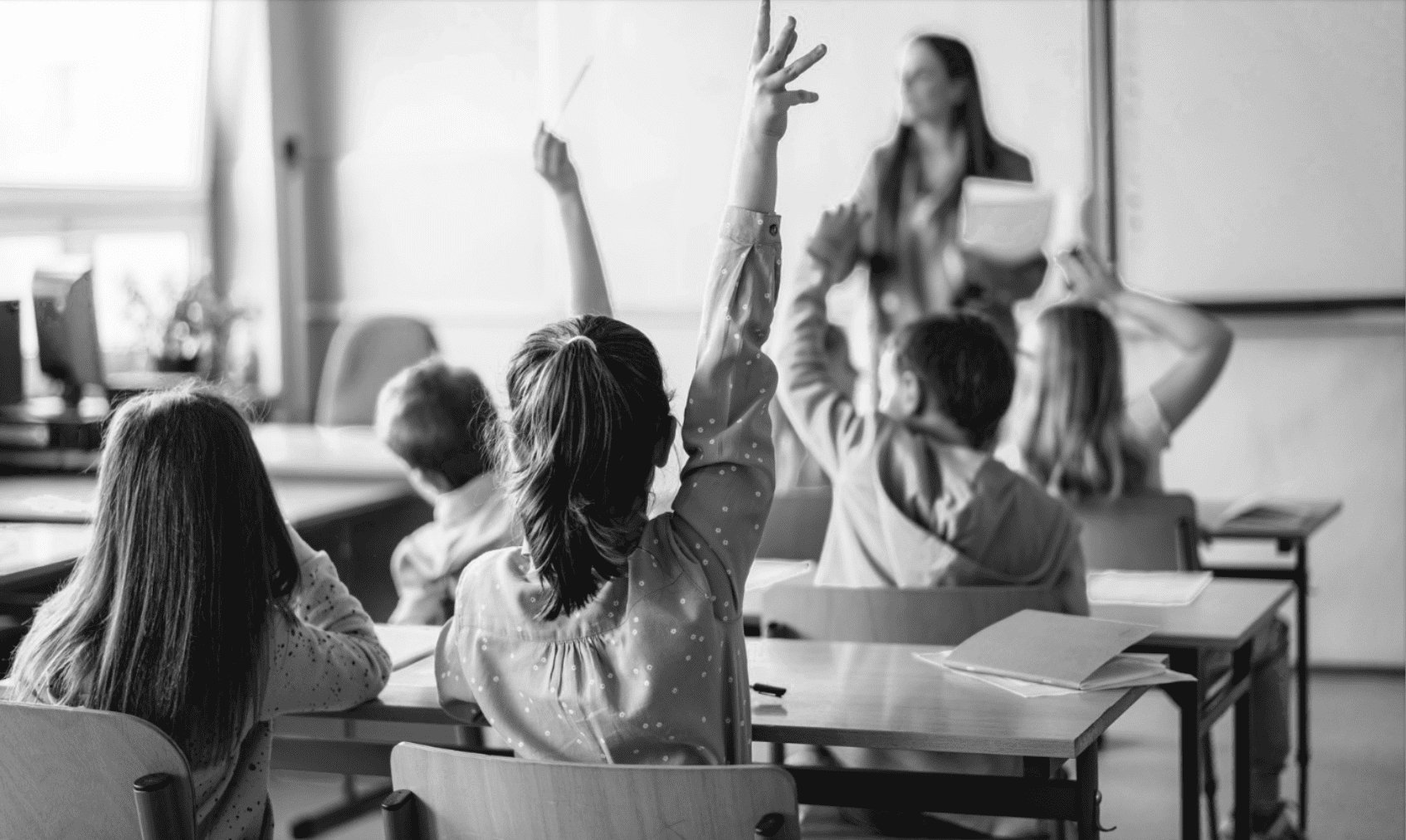Kids are in danger, and in Texas, we’re getting ready to make decisions that could either protect them or make things worse. I am a parent and a teacher, and in both capacities, I would love to see our schools go back to as close to normal as possible. I think it’s crucial for learning and mental health that our students get familiar structures and familiar faces back. However, I am severely worried that this will not be the case.
The Commissioner of Education and the Texas Education Agency are supposed to come out in a couple of days with their first iteration of “guidelines” to help steer school districts for Fall 2020 planning. The ideas currently under consideration vacillate almost moment to moment between various plans for online learning; some form of hybrid, block schedules with half the kids at a time; or full normalcy.
I could have waited for that statement to be issued before publishing this, but I’m afraid that waiting could just result in more problems for our students. When was the last time waiting on the government to solve things turned out to be a really good idea?
The fallacy in this entire decision-making process is that kids are in terrible danger from COVID-19. The Center for Disease Control has already published that ages 0-17 have far less infection from coronavirus than from influenza over the past few cycles. Kids are far less likely than older ages to be hospitalized from or die of this disease. But kids are carriers, right? The World Health Organization revealed in early June that asymptomatic transmission is actually rare, contrary to prior reports. And transmission on surfaces has also been reported as being much less common than previously stated.
So plans to put plastic sheeting up between students or forcing all students to wear masks for 8 hours a day, breathing in their own exhaust, is, at the least, overkill—and at the most, desperately dangerous to their mental health.
What is truly dangerous to our children is the enforced isolation, the lack of social interaction, and the culture of fear in which we are entombing them.
The focus of the Commissioner of Education and TEA is misplaced. Their efforts are designed to mitigate the effects of COVID-19 on our students, and they are viewing this as only a public health issue. So the ideas of separating kids as much as possible, desks all pointed in rows toward the front, smaller class sizes, no recess, or eating all lunches in classrooms are all on the table. But these solutions are expressly designed to keep kids from infection. They are not designed for enhancing the ability of kids to learn. And in fact, they will reduce the ability of students to learn or retain knowledge. They will be afraid, they will be anxious, and they will be in physical conditions that make it more difficult for them to learn.
Calls to suicide hotlines are already up, as much as doubling during the shutdown (San Francisco Chronicle, April 15, 2020). While data on actual suicides won’t be known for about two years, “the result [of the shutdown] could be a ‘perfect storm’ when it comes to the risk of suicide,” says Mark Reger, Ph.D., chief of psychology services at the VA Puget Sound Health Care System in Seattle and an associate professor of psychiatry and behavioral sciences at the University of Washington School of Medicine.
Domestic abuse is anecdotally said to have increased as well, although calls were down for Fort Worth during the shutdown. A confidential source inside the Tarrant County sheriff’s office said that was likely because the abuser was always at home, and few calls could be safely made.
As an educator, my main job is to take care of children. Educate them, yes, but take care of the whole child, which, in one of education’s recent buzzwords, entails “social-emotional learning.” That means that worrying about kids’ mental and physical health is well within my purview as an educator. And for the last decade, that is what I have done.
However, I can’t really teach history or math or English to those worried about their own safety, as they are just trying to survive. This “new normal” in which we find ourselves is a perfect example. When children are terrified by the abuse they are suffering at the hands of loved ones, or preoccupied with the depression and anxiety created by the fear of coronavirus but exacerbated by the enforced isolation and lack of social opportunities, they are not listening in class. They are not logging on to Zoom classes or reaching out for tutoring. They are just trying to make it through one minute at a time and are certainly not thinking about learning about the angles of an isosceles triangle or anything else we’re trying to impart in school.
Disease is not the main issue, nor the only one. What we should be laser-focusing on is: how can we best educate students going forward, while taking care of their needs, and also using common sense to prevent as many infections as possible?
Will any of the proposed “solutions” take care of kids and help them learn at the same time? Because I can assure you: if we keep kids at home part or all of the time, that is going to continue ramping situations up into depression, neglect, abuse, and suicide. If we hybridize schools, we will increase stress on families and children.
Don’t even get me started on our kids with special needs. Their anxiety and social needs are even greater than the average student, and we failed them. Where is the outrage for students whose structure of life was stripped away and replaced by the imaginary structure of distance learning?
This spring was an emergency situation, and our education officials made the best choices they could make in the short period of time they were given, with the little information that was available. What we did in the spring were emergency measures, and it wasn’t the worst it could have been … but it certainly wasn’t the best we could do going forward, either. We don’t have the excuses this time. We have information. We have time to develop a plan. We know how children learn best and what is needed, and we have got to get this right.
At this moment, I’m none too hopeful. The culture of fear seems to have taken over everything, including education administration.
This is when I think school choice could make a huge impact. While I am a public school teacher, and I firmly believe in the mission of public education and that public schools are necessary, I also believe in my soul that every parent has the right to find the options best for their own children. I have four sons, two of whom are public school graduates. My third son currently attends a private school, and my fourth son still attends our local public high school. We made those choices based on the individuality of our children, and the different needs of each. All families should do the same and should be allowed to make those same individualized decisions.
However, the private and homeschooling environments are not in danger the same way that the public school sphere is. If we had true school choice in Texas, I believe public school districts would make a better choice here—one that was designed to be the best for children. However, I have heard that at least one district is fairly certain that their students will be unable to attend a private school or home-school, and so they are making decisions based on fear, not based on what is best for their students. It’s almost as if they have a captive audience, so they are not responsive to their customer base. Where are public kids going to go if they can’t afford a private school and they can’t stay home full-time with parents?
We need a citizen movement to change this mistaken focus. If you are a parent, or a grandparent, or simply a citizen concerned about the abuse and mental health of students, please contact your local school board. Let them know that you support going back to school with as much normalcy as possible.
Call or email TEA or the Commissioner of Education and let them know that you support local control over what choices are made about schools. In fact, use the CDC’s own quote: “All decisions about implementing school-based strategies … should be made locally, in collaboration with local health officials who can help determine the level of transmission in the community.” [Italics added by me for emphasis.]
Please advocate for our children, and make your voice loud and clear that all children deserve to learn. New COVID-19 restrictions do not aid in that learning but make it more difficult and more painful for everyone involved, especially kids.
I beg our decision-makers to be bold and work toward what is best for children. Think of all the issues, not just the issue of disease transmission. Think about the whole child, their entire physical and mental and emotional health, and make a whole decision. Our children are depending on you.
This is a commentary submitted and published with the author’s permission. If you wish to submit a commentary to Texas Scorecard, please submit your article to submission@texasscorecard.com.





